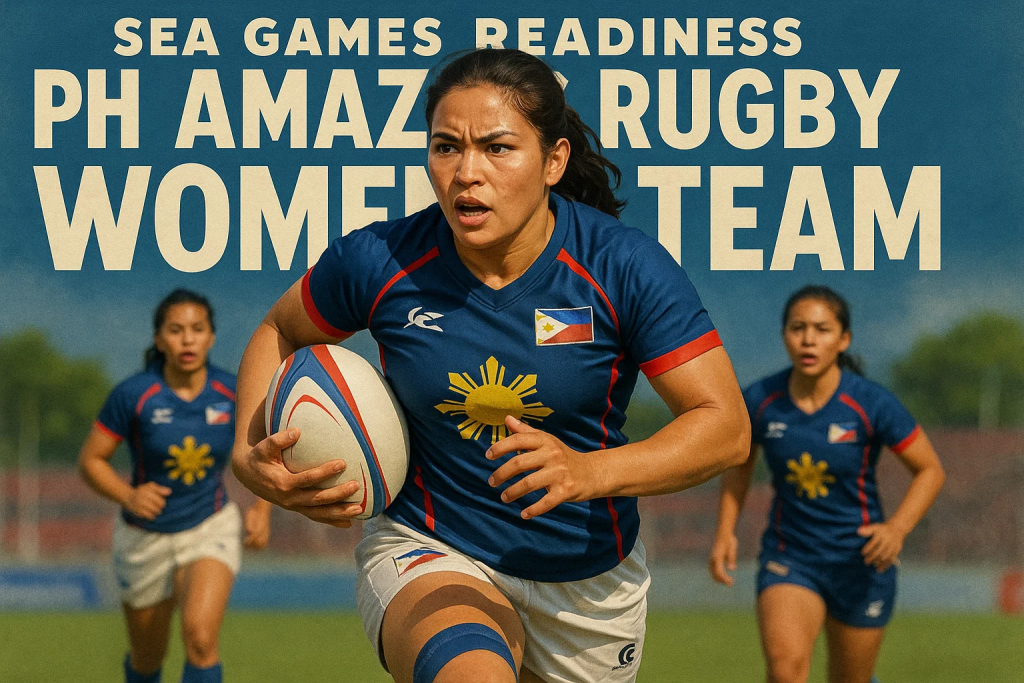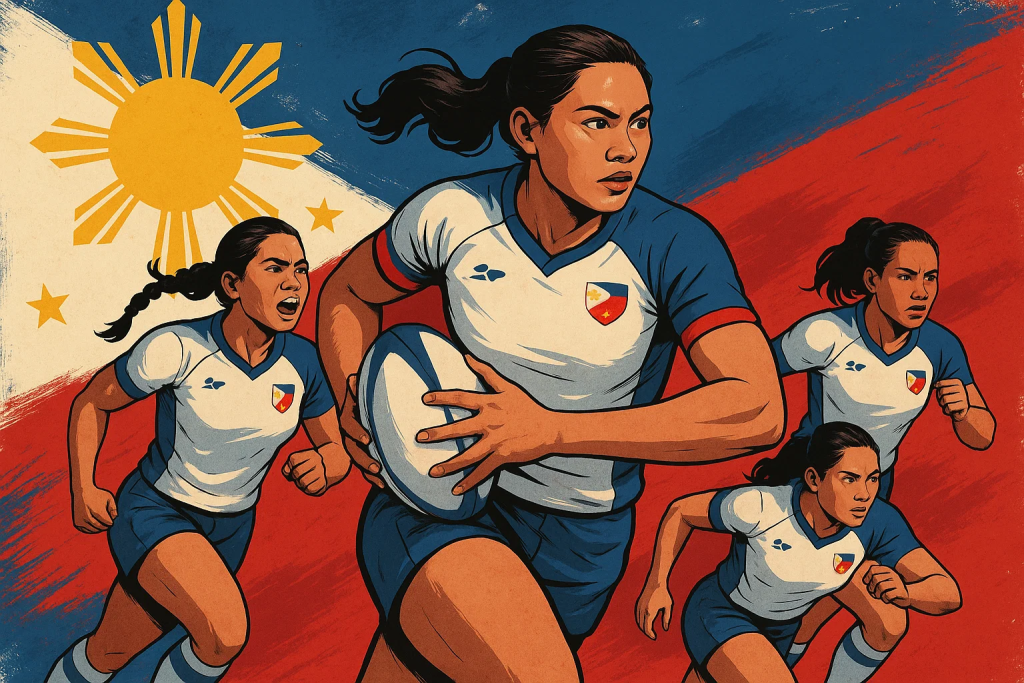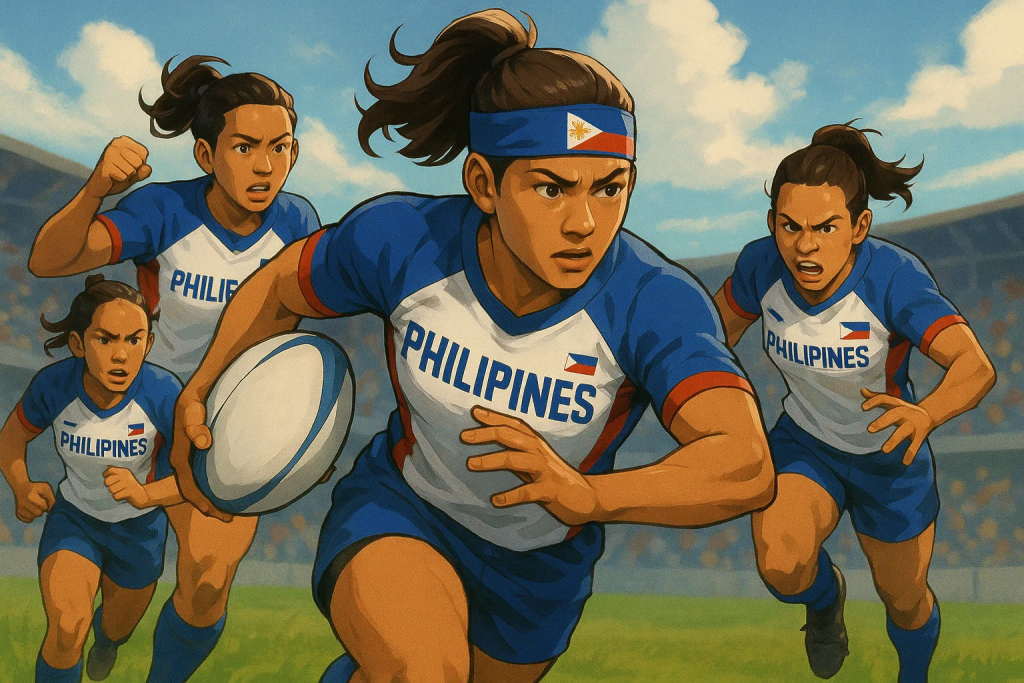Table of Contents
A nation, a team, and a window of opportunity
This guide maps the pillars of readiness for the PH Rugby Women’s Team as they build toward the next Southeast Asian multi-sport showpiece. It blends performance science, opponent analysis, logistics, and fan energy into a plan the country can support. The Philippines has a proud rugby sevens story built on grit, speed, and heart. The women’s program, competing regionally as the Volcanoes, is entering a crucial cycle where performance and preparation must converge. In a sport decided by inches and split-second decisions, readiness is not a slogan—it is a system.

Track record that informs the next step
Before projecting forward, it helps to ground expectations in what the team has already achieved. Hosting the regional showpiece in 2019 put the women in a bright spotlight; they surged to the final and took silver after a tight battle with Thailand—proof that the ceiling is high when systems align.
In program history, that medal sits beside earlier podiums, including a bronze in 2015, while more recently the program captured double gold at the 2024 Asia Rugby Emirates Sevens Trophy , and the women returned to Asia’s top division in 2025 and the women are now testing themselves against stronger fields to accelerate growth. Those results don’t guarantee outcomes, but they set baselines for readiness: the team knows the standard, and the region knows the Philippines can climb.
What “SEA Games readiness” really means for a rugby sevens squad
In rugby sevens, the ball is in play for 14 intense minutes; momentum swings on kick-offs, two-person tackles, and support lines. That is why readiness must be multi-dimensional:
- Physical readiness: speed, repeat sprint ability, power-to-weight, and collision tolerance.
- Technical readiness: catch–pass under pressure, tackle completion, breakdown decision-making, and strike-play execution from set pieces.
- Tactical readiness: kick-off plans, defensive maps, restart contests, and bench impact within the first 60 seconds on field.
- Psychological readiness: attention control, error-reset habits, and communication cues that reduce rattle after a conceded try.
- Medical readiness: soft-tissue integrity, hydration strategy, and return-to-play clarity.
- Operational readiness: visas, accommodations, session logistics, nutrition, travel buffers, and recovery hardware.
When each layer of readiness is measurable and rehearsed, the team’s risk profile shrinks and their ceiling rises.
Opponent landscape in Southeast Asia
Thailand’s women have been a regional standard-bearer across cycles, combining structure with a high-tempo offload game. Singapore’s program defends with organized line speed and is clinical on restarts. Malaysia and Laos are dangerous if allowed quick ball in the 5-meter channels. The Philippines has proven it can match these systems on the right day; the silver run in 2019 showed the gap is closable. Studying current game film from Asian events gives the staff a live read on tempo, ruck speed, and where the gaps and the growth are most visible.
Twelve key benchmarks to track from now until kickoff
- Repeat sprint ability (RSA): six by 30-meter sprints off 25 seconds rest; target a tight spread between best and worst rep to indicate readiness.
- High-speed running volume: meters above 18 km/h per session, with a progressive wave through the final four-week taper to protect freshness and readiness.
- Collision count and quality: dominated vs. neutral vs. lost in contact; aim for a rising dominated percentage as a sign of physical readiness.
- Tackle completion: total attempts vs. completions, categorized by channel; a team readiness anchor.
- Kick-off win rate: own restarts recovered plus opponent restarts disrupted; restart dominance correlates with scoreboard control and readiness.
- Breakdown penalties: fewer than one per half indicates clarity of roles and readiness.
- Line integrity errors: number of offside or dog-legs; rebalance spacing to protect readiness under fatigue.
- Set-piece execution: first-phase tries created or conceded; tactical readiness measure.
- Bench impact: time to first positive contribution; depth readiness metric.
- Hydration and cramp incidence: post-session mass change under 2% suggests good fluid strategy, a quiet but essential form of readiness.
- Soft-tissue alerts: hamstring/sural tightness trends detected via wellness forms; early flags preserve readiness.
- Psychological scales: short mood and focus check-ins; early intervention maintains collective readiness.
A 120-day periodization that respects domestic realities
Phase 1 – Build (Days 1–40): Emphasize strength-endurance, acceleration, and clean patterns. Small-sided games with contested restarts and double-tackle finishes. Every block closes with a micro-dose of pressure to normalize discomfort and deepen readiness.
Phase 2 – Sharpen (Days 41–80): Increase speed exposure and decision density. Scripted scenarios—down five with two minutes left, yellow card in the first half, scrum on left 22—so tactical readiness becomes reflex. Integrate more live scrimmages with men’s academy sides where safe.
Phase 3 – Taper (Days 81–120): Maintain top-end speed, reduce volume, and polish strike plays. Sleep and travel rehearsal, match-day timelines, and walk-throughs with the exact ball and kit. Readiness peaks when freshness and familiarity converge.
Roster architecture and pathways
A competitive squad balances veteran calm with youthful punch. Veterans stabilize communication and shape tempo on kick-offs; younger players extend the line and chase down breakaways. The pathway should link school programs, clubs, and national camps so that selection pools deepen. Publishing testing standards and selection windows gives prospects a transparent ladder. It also signals that readiness is rewarded—skill and effort today create opportunities tomorrow.
The staff stack behind a winning campaign
- Head coach and assistants: one leads attack and restarts; another owns defense and contact; a third handles individual skills. The common language is readiness.
- S&C coach: periodizes speed, contact prep, and wellness monitoring; readiness metrics inform daily changes.
- Physio/AT/Doctor: return-to-play maps and pre-hab menus; medical readiness reduced to checklists.
- Analyst: tags kick-off trajectories, ruck speeds, and tackle outcomes; turns video into readiness slides players can act on.
- Team manager: logistics, visas, accommodations, and liaison with the NOC; operational readiness in action.
Game-model clarity: how the Volcanoes can win big matches
- Own the restart lane: Use varied hang time and placement to target weaker receivers. Commit three to contest; even a tip disrupts exit shape and builds readiness in chaos.
- Defend the middle third: Deny clean ball in the seam between sweeper and guards; force play to edges where cover tackles and touchline are allies—tactical readiness under speed.
- Attack off turnovers: First pass to space, second to pace. Create 3-on-2s before defenders reset; this makes technical readiness visible on the scoreboard.
- Bench as weapon: Design first involvements—kick chase, chop tackle, support lines—so replacements deliver immediate value and demonstrate readiness.
Health, recovery, and travel: invisible wins that decide medals
- Sleep banking: add 30–45 minutes nightly in the final two weeks pre-tournament; it raises resilience and cognitive readiness.
- Heat management: practice in similar humidity; trial cooling towels, slushies, and shaded benches to preserve readiness late in games.
- Nutrition: anchor protein at 1.6–1.8 g/kg; carbohydrate timing around sessions; sodium strategy in hot venues—foundations of metabolic readiness.
- Soft-tissue care: daily hamstring/adductor checks; quick escalation keeps readiness from eroding.
- Travel rehearsal: simulate call times, bus windows, and warm-up sequences; operational readiness eliminates surprises.
Community, sponsors, and fandom: the twelfth player
Grassroots visibility matters. A steady rhythm of school clinics, club open sessions, and brand collaborations fills the stands and the feed. For sponsors, clarity on deliverables—photos, clinics, shoutouts, and usage rights—turns goodwill into renewals. A healthy ecosystem pays for better camps and analytics, closing the loop between support and readiness. The women’s team thrives when the country sees them often and understands what they’re building.
Governance, eligibility, and reporting
Eligibility compliance and athlete welfare systems sound bureaucratic, but they win games. Clean documentation avoids last-minute scratches; mental-health check-ins keep players balanced; safeguarding policies ensure a safe camp. Publishing brief, readable reports earns trust from families, clubs, and donors and signals professional readiness.
KPIs that tie performance to investment
- On-field: restart win rate, tackle completion, penalties conceded, line breaks created, points per possession.
- Off-field: injury-days lost, camp attendance, sleep quality, sponsor activations delivered, content reach.
If the KPIs move in the right direction, the case for more resources strengthens, and the cycle of readiness improves each quarter.
Call to action: Be part of the build
If you are a coach, club player, parent, or brand, this is the time to plug into the program. Offer a sparring session, host a clinic, fund a camp meal, or amplify a match stream. The women will do the hard work—sweat, film, and repeat. What the country can add is attention, logistics, and love so that readiness converts into podium days. Follow official channels, share their updates, and create weekly watch parties. Small actions compound into national readiness. Invite a friend, tag a teammate, and check the schedule this week. Small coordinated efforts help camps run smoother and signal the nation’s belief in the program’s future. One shared ritual.
Scouting the region: styles, threats, and opportunities
Thailand. Expect disciplined exits, a preference for width, and the ability to shift the point of attack with late footwork. Their success in recent years has come from efficient restarts and a collective ability to make first-up tackles in space. When opponents smash their rhythm at the kick-off and deny clean ball, Thailand’s shape takes longer to settle—a window the Philippines can exploit early in halves.
Singapore. A well-drilled side that rarely gives away cheap penalties. Their best passages flow from simple catch-pass detail and quick reactions when a carry gets the gainline. For the Volcanoes, the strategic note is to vary tempo—dummy mauls on tap penalties, quick taps when Singapore is still adjusting—and to protect the ruck edge so their link players cannot skip into daylight.
Malaysia and Laos. Both programs surge when they get front-foot ball in the five-meter channels. They can be rattled by targeted chop tackles followed by a second arrival to lock the ball. If the Philippines imposes a lower tackle-height policy early, the contest slows and offloads dry up. The women’s squad can then attack tired shoulders with strike plays off scrums in the middle third.
The pattern across the region is clear: teams that control restarts, minimize breakdown penalties, and bring two-person tackles consistently tend to own the scoreboard. For a Filipino side blessed with pace and competitive spirit, the path forward is to make those behaviors automatic.
The seven-a-side playbook: moments that decide tournaments
- Kick-off and receipt. The kickoff is a set piece; treat it like one. Pinpoint kicks to the five-meter tramlines invite contestable wins. On receipt, having a dedicated “protector” prevents defenders from smashing into the catcher’s blindspot.
- Breakdown. If the first carrier wins the shoulder battle, the second action must either present cleanly or trap the jackal. Drill one-meter leg drive, then rapid ball placement; the third player places a strong square shield rather than a long lunge.
- Defensive map. Sevens defense is all about pictures. The “umbrella” can work against teams who pass without deception; against step merchants, a soft drift buys time. Consistency in call language means edges know when to jam and when to fold.
- Two-phase strikes. A common pattern is scrum-to-midfield, then a switch play that targets a mismatch in the seam. What matters is timing and deception rather than complexity.
- Yellow-card management. With six on the field, kick long to recover time; with advantage, carry tight to suck defenders before launching pace outside. The point is to avoid panic and keep structure.

Microcycle: an example training week in camp
- Monday (Pitch + Gym): speed gates, acceleration mechanics, followed by small-sided games that reward turnover conversions. Afternoon gym for posterior chain and anti-rotation core.
- Tuesday (Tactical): rehearsed restarts, line spacing, and defensive maps. Short video session that highlights two good behaviors and one fix from recent scrimmage.
- Wednesday (Recovery + Skills): pool or bike flush, yoga-based mobility; low-stress handling blocks, mixed-height tackling shapes onto pads.
- Thursday (Game Day Rehearsal): 2 x 7-minute live blocks with referees; set-piece to strike-play sequences; mock press interactions to normalize public attention.
- Friday (Polish): captain’s run, kick-offs at match venue if allowed; hydration checks and pre-pack routine.
- Saturday (Community + Film): school clinic in the morning, then film review and walk-through.
- Sunday (Off): sleep and family time to keep spirits high.
This rhythm proves sustainable for amateurs balancing jobs or studies while chasing elite standards. The detail is as important as the effort: consistent timing, recurring cues, and tight session briefs.
Video and data: how information becomes edge
Good teams watch film; great teams turn film into pictures the brain can recall under fatigue. The workflow should look like this: record scrimmages from a high angle; tag events (kick-offs, tackles, line breaks, penalties); group clips by theme; export ten-second “loops” that players can scroll through on their phones. Add a simple dashboard that shows trends—penalties by location, tackle outcomes by channel, and conversion rate off turnovers. Because sevens rewards clarity, the coaching message must be short, specific, and repeated until it becomes habit.
Nutrition and hydration: science without the fuss
Camp catering should be predictable, tasty, and ergonomic. Build plates around rice or pasta, add two palms of lean protein, and use fruit, yogurt, or chocolate milk for quick post-session refuel. For hot venues, add sodium to bottles and pre-cool with ice slurries 20–30 minutes before kick-off. A simple weigh-in and weigh-out protocol guards against avoidable cramp. Finally, treat caffeine like a tool—reserve it for big days to maintain its effect.
Mindset architecture: because pressure is a system too
Pressure will visit—during selection, in travel days, in a pool match that swings on a single pass. Rather than hoping pressure won’t show up, build routines that welcome it: a 60-second reset after errors; a two-word huddle cue that means “breathe and next job”; and a visualization block in the last minute of warm-ups where each athlete rehearses her first collision and first carry. The goal is not perfection but repeatable responses. That is how character becomes performance.
Logistics and travel: the quiet art of being on time
Sevens tournaments compress emotion into two days; hotels, buses, and locker rooms become part of the performance. Confirm bus call times in writing and with a visual schedule on the breakfast table. Pack copies of kit. When everyone knows the plan, execution becomes calm and decisive.
Funding the build: why sponsors and small donors both matter
Elite preparation is expensive: field rentals, video gear, recovery tools, travel, insurance. A balanced budget mixes title partners with community-level donors. Sponsors want clarity on what they receive—logo placement, community clinics, social posts, hospitality at matches—plus a post-event report. Small donors respond to human stories: highlight a scholar athlete, a comeback from injury, or a parent who travels after work to watch training. When you communicate clearly, financial support becomes repeatable and strategic.
Fan guide: how to follow and help the team
Sevens is one of the easiest codes to fall in love with. Matches last only 14 minutes, so every possession counts. If you’re new, watch the kick-offs and the first tackle after each restart—that is where momentum is born. Follow official federation pages and players’ profiles; share schedules and score updates; start group chats that rally friends to stream or attend. If you are a coach, set aside one weekend per month for your junior girls to observe camp sessions. Visibility leads to participation; participation grows.

Legacy and pathways: making today’s wins feed tomorrow’s
The best national programs function like ecosystems. Schools and community clubs introduce the game; regional hubs consolidate coaching and medical standards; national camps sharpen detail and courage. Publish a simple one-page pathway and keep it updated: where to start, how to progress, when talent ID opens, and what the expectations are. Track drop-off rates and ask why people leave; sometimes small changes—friendlier training hours, cheaper travel, or safer venues—keep more girls in the sport. Build for a decade, not just a tournament.
Watching the trends: what the data in Asia says
Regional competition has tightened. Programs invest in strength and speed, and the top teams close out halves with brutal efficiency. For the Philippines, that means the margin for error narrows in contact and on restarts. The upside: when execution meets tempo, brave carries and quick support create line breaks in clusters.
Frequently Asked Questions
1) What is the team’s recent regional result?
The program won silver on home soil at the 2019 regional games, falling to Thailand in the final, and later secured double gold at the 2024 Asia Rugby Emirates Sevens Trophy before stepping back into Asia’s top division in 2025 . Those outcomes demonstrate upward trajectory and inform readiness.
2) Who are the primary rivals?
Thailand is the regional benchmark; Singapore and Malaysia bring organized structures; Laos is improving fast. Scouting their restarts, ruck speed, and defensive maps shapes tactical readiness for match week.
3) How big is the playing group?
Numbers vary by camp, but competitive squads keep 16–20 athletes in the training pool, with 12 named to a tournament roster. Clear selection standards reward readiness, not reputation.
4) What does a typical match week look like?
Two main pitch sessions, one speed exposure, one recovery day, and detailed video. Nutrition, sleep, and activation windows are timed to preserve readiness.
5) How can fans help?
Engage on social, buy tickets or merch when available, and support local clinics. The more visible the team, the stronger the resource pipeline—and the higher the collective readiness.
